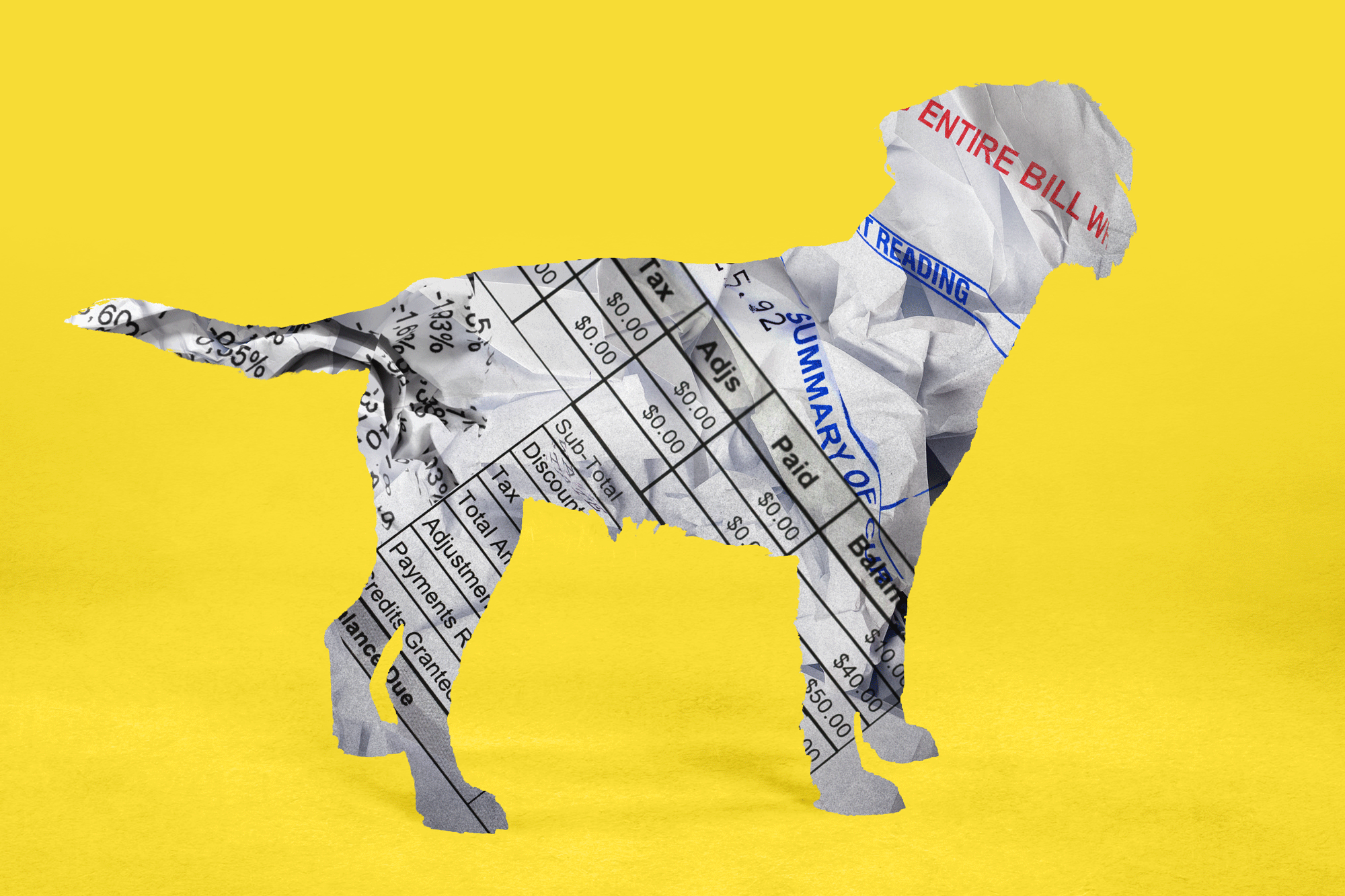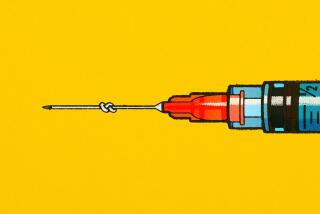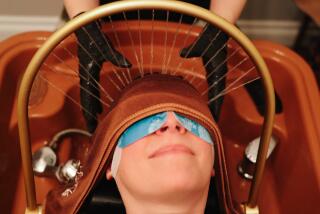Veterinarians Point Way to New Type of Treatment--Acupuncture : Animals: A small group advocates the needle therapy as an alternative to drugs. The practice is gaining wider acceptance.
MIDDLEBURG, Va. — The patient quivered as William McCormick applied pressure to pinpoint the source of back pain. Then he inserted a needle. No problem this time, though sometimes the patients try to bite--or kick.
McCormick, one of about 125 U.S. veterinarians certified to practice acupuncture, says the therapy used by the Chinese on humans and animals for 3,500 years is an effective alternative to Western medicine. “The potential is vast. I feel each time I do it I’m touching on new ground.”
Acupuncture, whether in humans or animals, consists of stimulating precise points on the surface of the body. Traditionally, the stimulus is insertion of extremely fine needles; more recently, ultrasound and lasers also are used.
In traditional Chinese thought, each human or animal is born with a fixed amount of energy, called chi . Energy imbalance, from external or internal causes, is thought to be the underlying reason for disease. By treating certain reflex points, the acupuncturist helps the body balance its own vital energies.
Laboratory studies have found that this balancing occurs primarily through the nervous system, although physiological mechanisms such as hormones also are involved, the International Veterinary Acupuncture Society says. Balancing can adjust blood flow, nerve and muscle tone, hormone levels or organ function.
Dr. Meredith L. Snader of Chester Springs, Pa., executive secretary of the society, uses acupuncture exclusively in her practice.
“People are looking to alternative methods of treatment rather than going to drugs,” Snader said. “The public is demanding that vets change, instead of pumping animals full of medication.”
The American Veterinary Medical Assn. endorsed acupuncture in 1988 as valid treatment, but it hasn’t been totally accepted by veterinarians.
“Some think it is pretty strange, and others accept it quite readily,” McCormick said.
Snader said her colleagues were skeptical when she started using acupuncture eight years ago. “It didn’t bother me. I said, ‘Just give me a chance.’ Now most of them are very willing. Now they refer clients to me.”
Acupuncture makes up a major part of McCormick’s practice in Virginia’s horse country, where many owners and trainers insist on it. “My clients have come to expect expertise from me on that--mostly because the horses have done well,” he said. “At its best, it’s effective 80% of the time.”
Acupuncture started out as a small part of Snader’s practice, but “the demand became so great that I had to give up my traditional practice because I did not have time to do it.”
McCormick and Snader deal primarily with horses, but acupuncture can be used on any animal. “The Chinese use it on chickens, pigs, camels, water buffaloes,” McCormick said. “You could use it on snakes for that matter.”
Kitty Beveridge, who trains show horses at her Wind in the Willows farm near here, swears by the technique. As McCormick applied needles to a horse, she described the “dramatic turnaround” of a 3-year-old thoroughbred treated for pain in its back and legs. “He became much more relaxed through work and didn’t try to hurry.”
At Wind in the Willows, McCormick treated three horses Beveridge planned to take to Florida for winter shows. He worked quickly, inserting needles into the horses’ backs, haunches and legs as she held their halters.
A chestnut roan swung its head in a halfhearted attempt to nip McCormick, an expert on such equine disrespect after having horses kick him in the face and lie down on him. The worst he has suffered is a broken tooth.
“Working back on this end, a kick could kill you,” McCormick said as he inserted needles in an animal’s hindquarters.
He administered a mild sedative to two of the horses at Wind in the Willows to cut down on rambunctious behavior as he made his way under and around them. He said the needles themselves cause little pain and rarely require anesthesia.
While needles are the preferred implement, portable, battery-operated lasers sometimes are used on sensitive reflex points because they are less intrusive than needles. Ultrasound machines provide deep heat and are useful for such diseases as arthritis.
In addition to chronic pain, acupuncture is used to treat a wide variety of animal ailments, including reproductive, urinary-tract and abdominal problems, though McCormick said it’s not effective for such problems as broken limbs or acute bacterial infections that require antibiotics.
He recalled the case of an expensive race horse with an abdominal problem. The owner spent $5,000 for surgery and $5,000 for treatment of colitis, but the horse kept having pain. When he was called in, he performed a $150 acupuncture treatment, and the animal didn’t have the problem again.
Snader said acupuncture usually produces a positive response within minutes. “Usually at the end of my treatment I see a reasonable improvement,” she said. “Over the next several days, I see changes in gait.”
Although animal acupuncture was brought to the United States in the early 1970s when President Richard M. Nixon re-established ties with China, it isn’t taught in veterinary schools, said Dr. Kent Roberts, an associate professor at the Virginia-Maryland Regional College of Veterinary Medicine.
To receive certification, veterinarians must take a 120-hour course offered by the acupuncture society.
More to Read
Sign up for Essential California
The most important California stories and recommendations in your inbox every morning.
You may occasionally receive promotional content from the Los Angeles Times.










